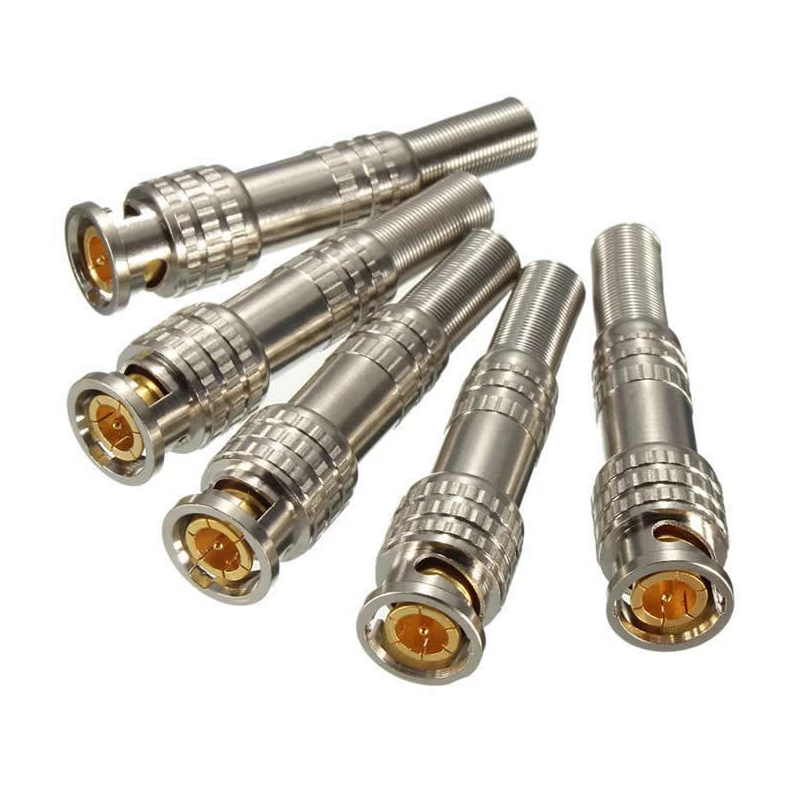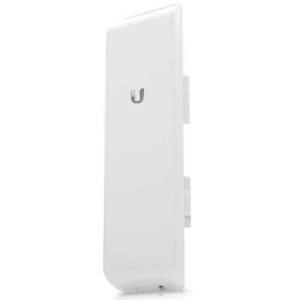BNC CONNECTOR
A BNC connector is a type of coaxial cable connector commonly used in various applications such as video signal transmission, telecommunications, and networking systems. The BNC connector is known for its reliable performance, quick-connect mechanism, and wide compatibility with different coaxial cables and equipment. Below is a detailed description of the BNC connector:
Key Features:
- Bayonet Locking Mechanism:
- The BNC connector features a bayonet-style locking mechanism, which ensures a secure connection and prevents accidental disconnection. The connector locks in place with a simple twist, making it quick and easy to install or remove.
- Wide Compatibility:
- BNC connectors are used with coaxial cables, typically for video (such as CCTV systems), audio, and data transmission applications. They are compatible with various coaxial cable types, including RG-59, RG-6, and RG-11.
- Signal Integrity:
- The BNC connector maintains signal integrity by providing a low-loss connection, which is crucial for high-frequency applications like video transmission. It minimizes signal degradation over long distances, ensuring clear and consistent signal quality.
- Impedance Matching:
- BNC connectors come in two common impedances: 50 ohms and 75 ohms. 50-ohm BNC connectors are typically used in data and RF communication applications, while 75-ohm BNC connectors are used primarily in video signal transmission (e.g., CCTV, broadcast, and cable TV).
- Durable Construction:
- Made from materials like brass, nickel-plated brass, or stainless steel, BNC connectors are built to withstand repeated use and harsh environmental conditions. Their robust construction ensures long-term reliability and durability.
- Easy Installation:
- BNC connectors are known for their tool-less installation, requiring no soldering or special tools for connection. They often feature a crimp or compression fitting method to connect to the coaxial cable.
- Versatile Applications:
- BNC connectors are widely used in industries such as telecommunications, broadcasting, CCTV surveillance, and networking. They are particularly common in closed-circuit television (CCTV) systems, where they are used to connect cameras to video recorders or monitors.
Specifications:
- Connector Type: Male, Female, or Bulkhead BNC
- Impedance: 50 ohms (data/RF) or 75 ohms (video)
- Frequency Range: Typically supports up to 4 GHz or higher, depending on the model
- Material: Brass, nickel-plated brass, or stainless steel
- Contact Type: Gold or silver-plated contacts
- Cable Compatibility: Works with coaxial cables such as RG-59, RG-6, or RG-11
Applications:
- CCTV and Surveillance:
- BNC connectors are commonly used in CCTV systems to transmit video signals from security cameras to video recorders or monitors. The 75-ohm BNC connector is typically used for this application to maintain high-quality video transmission over long distances.
- Audio/Video Systems:
- BNC connectors are used in audio/video equipment for transmitting high-quality video signals. For example, they are used in broadcast television and professional video production for connecting cameras, video equipment, and monitors.
- Data Communication:
- The 50-ohm BNC connector is often used in data communication systems and RF (radio frequency) applications, such as Ethernet over coaxial cable and radio communication systems.
- Networking:
- BNC connectors are used in some legacy networking systems, especially older 10Base2 Ethernet networks, which used coaxial cables for data transmission.
- Test Equipment:
- BNC connectors are also used in test and measurement equipment such as oscilloscopes, signal generators, and spectrum analyzers to transmit signals for analysis.
Types of BNC Connectors:
- Male BNC Connector: Has a pin in the center that fits into the female connector.
- Female BNC Connector: Has a socket that the male BNC connector plugs into.
- Bulkhead BNC Connector: A panel mount version used to create a secure connection on equipment or enclosures.
- Mini BNC Connector: A smaller version of the standard BNC connector, often used for space-constrained applications.
Benefits of Using BNC Connectors:
- Quick and Easy Setup: BNC connectors are easy to install and remove, thanks to the bayonet locking mechanism.
- Reliable Connection: The locking mechanism ensures that the connection remains secure, even in high-vibration environments.
- High-Quality Signal: BNC connectors maintain signal quality over long distances, making them ideal for video and audio applications where clarity and consistency are important.
- Versatility: BNC connectors can be used for both video and data applications, making them highly versatile.














Reviews
There are no reviews yet.